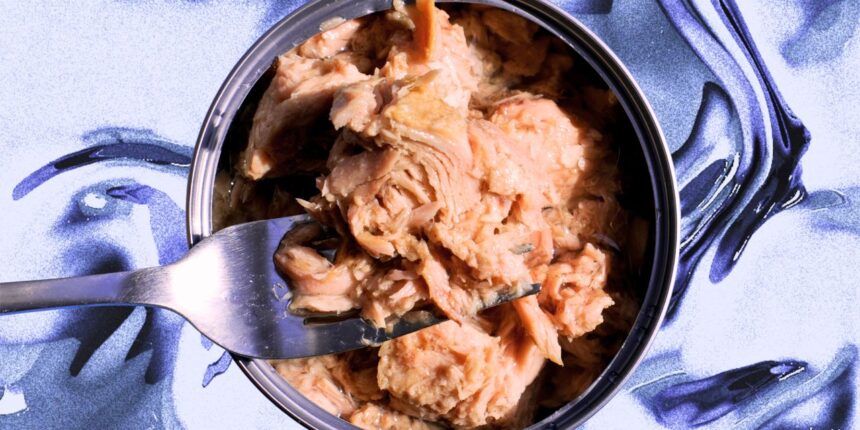For reference, the FDA divides fish into three categories based on their average mercury content: “Best Choices” (or fish that contain less than or equal to 0.15 micrograms of mercury per gram, like skipjack), “Good Choices” (fish that contain more than 0.15 micrograms of mercury per gram, all the way up to 0.46 micrograms per gram, like albacore and yellowfin), and “Choices to Avoid” (or fish that contain more than 0.46 micrograms of mercury per gram, like bigeye).
Two things to keep in mind: One, that these recs are meant for high-risk groups, not the general population. And two, these reference numbers “are averages, and sometimes they’re very highly variable,” Dr. Sunderland says. “You can get a bluefin tuna that’s not that high in mercury, and you can get a bluefin tuna that’s crazy high in mercury, and you can get an albacore tuna that’s relatively low.”
With that said, here’s some guidance to consider for more vulnerable people:
Pregnancy and breastfeeding
Two to three servings of canned light tuna (or around eight to 12 ounces) per week is fine, according to the FDA’s chart. If you’re going with albacore or yellowfin instead, you’ll want to stick to one four-ounce serving per week—and not eat any other fish during that period. Similarly, the American College of Obstetricians and Gynecologists (ACOG) recommends limiting albacore to six ounces per week. And bigeye tuna should be avoided, according to guidance from both the FDA and ACOG.
Childhood
Children ages one to 11 can have two servings of skipjack or another canned light tuna per week, according to the FDA chart. Keep in mind that recommended serving sizes vary by age: one ounce for kids ages one to three, two ounces for kids ages four to seven, three ounces for kids ages eight to ten, and four ounces for 11-year-olds. Other tuna species like albacore, yellowfin, and bigeye appear to be off-limits, according to the chart.
With that in mind, how often is too often to eat tuna for most of us?
Even though the recs above are specifically targeted at high-risk populations, Dr. Sunderland says that they can still apply to the average Joe or Jane. “Typically, we use that for everyone in this country,” she says.
To give an overall recap: Low-mercury tuna like skipjack? “You can have them as much as you want,” Van Eck says. “That’s probably okay to eat every day,” Dr. Sunderland elaborates. Middle-of-the pack tuna options like albacore and yellowfin? “You could eat that weekly, but not every day,” Van Eck says. Try sticking to once or twice a week, max, according to Dr. Sunderland. And when it comes to high-mercury tuna like bigeye, you can have it as an occasional treat, but definitely try to avoid making or ordering it on the regular. “You want to have it rarely, if ever,” Van Eck says. Once in a while is okay, but it’s definitely “not great to eat every day,” Dr. Sunderland adds.
Still, even within the general population, mercury intake recommendations will vary from person to person based on characteristics like age, gender, and body weight. “You really want to think about, ‘Who am I?,’” Dr. Sunderland advises. Body weight will dilute how much you eat, for instance, according to Dr. Sunderland, so larger people can probably have a bit more tuna than smaller people. Similarly, folks planning to become pregnant and small children may want to avoid eating even low-mercury tuna like skipjack on a daily basis, she says, “just because we know that any exposure to mercury does affect cognitive function even at low levels.”
Basically, eating tuna isn’t inherently bad for you (as long as you’re sticking roughly to these general guidelines), but the potential mercury content is something to take into consideration as you’re making dietary choices, especially if you belong to a higher-risk population. Objectively, it’s still preferable to eat low-mercury Northern European fish like herring, pollock, hake, or sardines, according to Dr. Sunderland. “From a nutritional perspective, those are better for you,” she says.
Get more of SELF’s great service journalism delivered right to your inbox.
Read the full article here



